THE WOLF IS MY BROTHER by Robert Shimek, Gaawaabaabiganikaag Ishkonigan
THE WOLF IS MY BROTHER
THE CULTURAL, SPIRITUAL, AND HISTORIC RELATIONSHIP BETWEEN OJIBWE ANISHINABE AND MA’IINGAN OF THE GREAT LAKES REGION OF NORTH AMERICA
The Wolf is my Brother! These words have been heard among Ojibwe Anishinaabe communities of the western Great Lakes Region since time immemorial. At times, it was common knowledge among all. In more recent times, the idea was almost erased in many communities because of the acculturation and assimilation policies of the United States government and churches established on Indian Reservations. “Kill the Indian to save the man”. These now famous words were uttered by William Pratt, Superintendent of Carlisle Boarding School in the late 1870’s. Carlisle was the first large scale Indian Boarding School established in the United States. Within twenty years, government and church operated boarding schools had sprung up all across the American landscape. The words and the educational philosophy of Mr. Pratt nearly eliminated the Indigenous Anishinaabe way of thinking about the world, the wolf, and just about everything else that stood in the way of White Man’s conquest and colonization of America, including other tribes.
Over the many of years of interaction between Indigenous People (Anishinaabe) and Euro-Americans in the Great lakes region, there has been a great deal of misunderstanding between the two cultural population groups. At times, this has led to conflict on a variety issues. The nature and essence of these differences has, in some cases, became multi-generational. The recent delisting of the grey wolf from federal protection and turning wolf management over to the states in the Great Lakes region has created some resistance from Ojibwe tribes in the same region. Here in Minnesota, the major contention is the statewide wolf hunt that refuses to acknowledge the territorial jurisdiction of the tribes and the importance of a healthy relationship between Ma’iinganag and Anishinaabeg.
After hundreds of years of interaction, many Euro-Americans do not understand the complexity of the relationship Anishinaabe (original man) in the region have with the wolf (Ma’iingan). Nor do some Anishinaabe understand the Euro-American relationship to the world we all share. We have been neighbors for many years; we still have much to learn about each other. To start gaining ground on a mutual understanding, some tough issues and questions have to be raised.
Some here assert that in Minnesota we can shoot, trap, and snare up to 50% of the wolves annually and the population will always rebound and be stable. They consider wolves a renewable resource that can be killed indefinitely with no significant social, cultural, or political impact. Some in the Anishinaabe community would ask, how can the state of Minnesota legislate the killing of my Wolf Brother? How can the state of Minnesota, after years of hard lessons, legislate a new variety of colonialism and racism directed at Anishinaabeg without consultation or consent? The statewide wolf hunting, trapping, and snaring season has been become problematic for tribes to manage their resources as they see fit. Minimally, if there is something rare, endangered special, or sacred to the Minnesota Ojibwe tribes, they should be allowed to care for it within Indian Reservations boundaries. This article begins an effort to close the gaps in understanding and relationships between the two cultures as it is related to Ma’iingan.
The following is a small part of the story about how things came to be the way they are through the eyes of the Ojibwe Anishinaabeg in the Great Lakes region. It is not intended to be comprehensive of all the thinking that supports why Ma’iingan is sacred and special to Anishinaabeg. It is, however, a statement about why Anishinaabeg should have control over caring for Ma’iinganag within their respective reservations and jurisdictions. The information will lay some ground work that will enable readers to begin to understand the uniqueness of the Anishinaabe/Ma’iingan relationship as well as the cultural, spiritual, and historic relationship they share. This is not the entire story. The first two pieces talk a little bit about how cultural and spiritual relationships were formed. The last two segments address more specifically the role of the wolf in the context of these relationships.
All members of the Creation get their voice.
A very long time ago, when the earth was young, things were very much different than now. One of these differences was there was no sound. Nothing had voice. Not the winds, the water, the animals, even the plants. Nobody could be heard, they had no voice. The spirits in charge of making this beautiful homeland for Anishinaabeg decided that something had to be done about all this. During this time, only they had voice and could talk to each other.
After careful consideration and consultation, they called for a huge ceremonial pow wow and feast. Runners were sent to invite the voiceless ones to the gathering. During this time when all from the entire creation were present, a huge ceremonial give away was to be held where each would each receive a voice.
After days of feasting and dancing, the appointed day arrived where each member of the creation was to receive their voice. They all lined up and, as their turn came, they stepped up to the spirits and received their voice. Each of the birds was told, from this time on, you shall sound like this. All the different animals were given their own voice. Even the trees were told, when the winds blow, your voice shall sound like this. And that is the sound we hear today. There were so many in the line that needed voice that this ceremony went on for days. One by one, all the different plants and animals all got their voice.
When the end of the line finally reached where the spirits were gathered, the last one standing there was Anishinaabeg. The spirits looked at Anishinaabeg, the Anishinaabeg looked at the spirits, and the spirits said, we are out of voices. All the available voices in the entire universe have already been given out. The spirits instructed Anishinaabeg to wait and that as soon as they found a solution, they would be summoned.
In the mean time, the ceremonial pow wow and feast was ongoing and all members of the Creation were enjoying their new voices. For the first time, they were talking to others of their own kind as well as ones different from themselves. Only Anishinaabeg had to sit in silence and listen to all the new voices. After a few more days of deliberation and consultation, the spirits recalled Anishinaabeg to render their decision about the voice they were to have.
The Anishinaabeg were told, after days of serious discussion, ceremony, and thought, there was very little that could be done to give them a new voice of their own. The spirits looked everywhere for that one voice that had not been used and came up with nothing. Anishinaabeg were told they were going to have to share a voice with somebody else. They weren’t sure if this was something they wanted to participate in or not but there was nothing they could say about it because they had no voice.
The spirits announced that the Anishinaabe would have the same voice as them. They were going to have to share the same language as the spirits. The language of the Anishinaabeg would be spiritually deriven. And that was the only thing left to be done if the Anishinaabeg wanted to have a voice in the matters of the earth and the spiritual universe. This voice of the Spirits is the language Ojibwe Anishinaabeg continues to use today.
Anishinaabeg gets some help
At this time, Anishinaabeg were still a weak and pitiful people. Each season, each year was a precarious existence. Everywhere else, all the plants and critters were surviving and thriving. Only Anishinaabeg continued to struggle for day to day survival. Throughout the villages, there was an innate uncertainty about the future. As the Spirits observed this, they soon realized they were going to have to call everybody from the whole creation back together for a huge ceremonial pow wow and feast. They were going to have to ask for help for Anishinaabeg.
At the appointed time, runners went out to invite all back to a huge gathering to try figure out who could or would help. After a number of days of dancing, feasting, and ceremony, each member of the creation was instructed to step up and describe how they were to help these pitiful Anishinaabeg.
One by one, individually, in pairs, flocks, herds, etc, the different plants and animals described how they would help Anishinaabeg. Some said, I will offer myself if they are hungry. Others said they would help if Anishinaabeg were sick one sort of way or another. Some even said they would give Anishinaabeg an itchy butt if she/he sat down on them. When asked how this was to help, poison ivy and stinging nettle said it would teach Anishinaabeg to always be aware of what was around them. A few even said that if they caught Anishinaabeg out in the bush by themselves, they would eat them. When asked how this was to help, grizzly bear and cougar said they would teach them to be respectful of all. And so it was, each member of the creation described to the Spirits and to Anishinaabeg how and what they would do to helpful.
Wenaboozhoo and Ma’iingan take a walk and give names.
Soon after all had their voice, Wenaboozhoo and Ma’iingan were visiting and walking together on a frozen river. As they strolled along, they were so engrossed in their conversation that they didn’t pay attention to the changing ice conditions. Before long, Wenaboozhoo fell through the ice into the cold water below.
By this time, Ma’iingan knew that Wenaboozhoo was an important being but that Wenaboozhoo sometimes acted foolishly and was known to trick others into things they didn’t want to do. As Wenaboozhoo was trying unsuccessfully to get out of the freezing water, Ma’iingan questioned the idea as to whether or not to help him.
Soon, Wenaboozhoo began pleading for Ma’iingan to help him out of the freezing water. He was getting so desperate that he told Ma’iingan that he would do anything he wanted in order to get assistance back to dry land. After a period of deliberation and listening to the increasingly pitiful pleadings of Wenaboozhoo, Ma’iingan finally turned his tail to Wenaboozhoo. After considerable effort, he was able to drag Wenaboozhoo out of the icy water to safety.
In exchange for his assistance, Ma’iingan told Wenaboozhoo they now had to give names to all the plants, trees, animals, birds, fish and all gifts of the creation. When agreement was reached, they began their journey. This was one of the final steps in making sure Anishinaabeg had a comfortable life on earth.
Anishinaabe and Ma’iingan take a walk.
ANISHINAABE AND MA’IINGAN WALKED THE EARTH AND CAME TO KNOW ALL OF HER. IN THIS JOURNEY, THEY BECAME VERY CLOSE TO EACH OTHER. THEY BECAME LIKE BROTHERS. IN THEIR CLOSENESS, THEY REALIZED THEY WERE BROTHERS TO ALL THE CREATION....
THE CREATOR SAID “,…YOU ARE TO SEPARATE YOUR PATHS. YOU MUST GO DIFFERENT WAYS. WHAT SHALL HAPPEN TO THE ONE OF YOU WILL ALSO HAPPEN TO THE OTHER. EACH OF YOU WILL BE FEARED, RESPECTED, AND MISUNDERSTOOD BY THE PEOPLE THAT WILL LATER JOIN YOU ON THE EARTH.” From The Mishomis Book by Edward Benton-Banai.
“What shall happen to the one of you shall happen to the other.”
A survey of history strongly reflects the reality of these prophetic words. As the British colonies in North America became firmly established, so did the first of the wolf bounties. By 1630, Massachusetts Bay Colony had enacted the first tax on livestock to begin raising revenue to pay wolf bounties. At this time, the extirpation and extermination of Indians and wolves in North America was well under way. This included an area that had bountiful numbers of both Indians and wolves prior to the colonization of the region. By the 1640’s, some tribes were mandated to turn in a minimum number of wolf heads if they wished to stay in the good graces of the colonies and be allowed to collect a bounty of three quarts of wine or a bushel of corn for each wolf. The extirpation/extermination policy trend continued well into the 1900’s. By the 1950’s, the wolf population of the contiguous 48 states had dropped from 2 million to just a few hundred. Wolves had been exterminated in 99 percent of their original range in this vast region.
In the year 1849, Minnesota became a territory of the United States. With the establishment of the territorial legislature came the passing of the first wolf bounty of $3.00. Varying amounts were paid until the bounty was removed in 1965. During the last thirteen years of the bounty was in effect, the annual wolf take was 188 wolves. The average bounty was just under $33.00 per wolf on top of the economic value of the pelt.
In 1973, the modern version of the Endangered Species Act became law. In 1974, Ma’iingan was placed under Endangered Species protection. For the first time in 344 years, the war against wolf ground to a stop all across the 48 contiguous American states. The only surviving wolf packs were in the Arrowhead Region of Minnesota.
Indians in America and Minnesota did not fare much better. Prior to the coming of the colonists, every square inch of land in North, South, and Central America was Indian Land. In what was to become the contiguous United States, there were 3,119,884.65 square miles of Indian Land. 203,125 remained in 1887. In 1934, Congress passed the Indian Reorganization act which halted the theft of Indian land. From 1620 to 1934, Tribes in America lost 2,994,884.69 square miles of land. Indians owned slightly more than .02% of their original land base.
By 2013, modest improvements in Tribal land totals have been made but are still less than 1% of the original total. Massive dispossession of Tribal land was accompanied by massive dispossession on Indigenous Peoples language, culture, spiritual structure, and history. Where tribal people once tread, there were now farms, ranches, loggers, or publically owned land. Where the wolf once howled, there was silence. While America collected wolf heads and pelts and paid bounties, the United States also awarded 426 soldiers with the Medal of Honor for their efforts between the years 1860 to 1898 during the United States Indian Wars. The destiny of Indians and wolves was very much the same throughout the history of first the colonies, than the United States of America. The prophetic words, “What shall happen to the one of you shall happen to the other” rang true when first spoken, and now.
The 1970’s brought the first major change in this common destiny of the Indian and the wolf. Indians and wolves politically and socially turned a corner. The survival and well being for both took major steps forward during this time. As previously mentioned, the Endangered Species Act became law in 1973. The wolf was placed under federal protection in 1974. The Civil Rights Movement was still raging in America. In 1973, the American Indian Movement (AIM) and many young Native Americans, including many from Minnesota, were surrounded and placed under siege by agents of the United States government in Wounded Knee, South Dakota. During the 71 day siege and conflict, the essence of the AIM position was they were no longer accepting the violation of our treaties and of the hopeless poverty, lack of education, health care, and inadequate housing on Indian Reservations throughout America.
For both Indians and wolves, the corner of our shared destiny was turned. For the first time in many years, the United States of America significantly began to uphold major commitments made by treaty with Tribes. Housing, education, and healthcare services all dramatically improved in the years following the 1973 conflict at Wounded Knee. And the legal killing of wolves officially stopped throughout the contiguous 48 states of America. But for the wolf, the only region with any significant population was northeastern Minnesota. Indians and wolves from Minnesota were unknowingly placed at the forefront of the social, cultural, and political turn around that was to be a significant recovery for both.
Modern oral history of Minnesota and Great Lakes Anishinaabeg is rich and fulfilling. An important thread of this history highlights the assistance the wolf gives to Anishinaabeg men who put on the military uniform to fight overseas in numerous conflicts for the United States. World War II, Korea, and Vietnam Ojibwe combat veterans tell of being in situations of extreme peril and danger. When it appeared that there was no way out these dangerous situations, Waabishkii-Ma’iingan (White Wolf) appeared in the jungle, rice paddy, or battlefield and led the Ojibwe man, and others, to safety. There are stories of Indian Children running away from boarding schools early in the 1900’s who were lost, tired, hungry, and cold. Again, the wolf made sure the child had food and warmth, and led the child, sometimes for over a hundred miles, safety back to her/his home village. A different story tells of a wolf pack taking in a young hunter who got lost during the winter. The wolves took care of the young man, and in the spring, returned him safely to his village. Anishinaabeg talk of these things among themselves, these events occurred.
The recounting of these types of events, and others, where Ma’iingan has assisted Anishinaabeg, continues to be an important part of modern Ojibwe oral history. Ma’iingan has shown Anishinaabe how to take care of one’s self, family, community, land, and nation. The wolf is also a foundation component of many Ojibwe ceremonies, historically (Ojibwe history), and contemporarily. There were times when Anishinaabe did take wolves, usually only for very specific reasons. These occurrences typically revolved around the request by an individual. At these times, a group of elders would discuss the request, if granted, a small group of men were selected to go out and get the wolf. The killing of a wolf occurred only after much deliberation and ceremony. Beyond these situations, for the Anishinaabe, there is no good reason to allow the random and indiscriminate killing of wolves. This is perhaps one of the earliest forms of self regulation by Indian people.
The improved trends for Indians and wolves continued up to January 2012 for wolves and tribes. This changed when the United States officially removed wolves from endangered species protection in the Great Lakes region. Within days of federal delisting, the Minnesota and Wisconsin legislatures introduced and passed legislation authorizing statewide wolf hunts. Shortly after that, Federal sequestration dramatically cut treaty obligated funds for essential tribal housing, education, and healthcare services. Long term impacts of both these actions remains to be seen. But this much is now known. 412 wolves were legally hunted, trapped or snared in Minnesota’s first regulated 2012 wolf season. 237 were legally killed in the 2013 season. Illegal killing of wolves remains problematic. The essence of the problem can be heard in many bars in northern Minnesota during the hunting season.
Despite a declaration from the White Earth Tribal Council creating a wolf sanctuary within the reservation boundaries, Minnesota wolf hunters, trappers and snarers killed 12 of our Wolf Brothers in the 2012 season on the White Earth Indian Reservation. Key services to tribal members on Indian Reservations have been dramatically cut. A recent Supreme Court ruling dealt the Indian Child Welfare Act a major blow. Global climate change continues unabated, altering the environment for both Indians and wolves. The state of Minnesota continues to ignore the request from tribes to let the tribes manage wolves within their reservation boundaries. On these issues and more, Minnesota Tribes may be regressing. Social conditions in many of our Reservation communities are unstable. State and federal authorities continue efforts to chisel away treaty rights.
The Wolf is my Brother! Hopefully, this information helps clarify and provide new information for those working to better understand the cultural, spiritual, and historic relationship between Anishinaabeg and Ma’iinganag. For many tribal members, these stories are nothing new. For all, it is hoped that the understanding of the duration and complexity of this relationship will lead to sounder decisions about the requests from tribes wanting to create wolf sanctuary or otherwise manage wolves as they see fit. For most, it is one and the same. When the tribes say, the Wolf is my Brother, it is hoped this portrayal of the uniqueness of the relationship helps all to better understand why it is so.
In closing, here are a couple thoughts about wolf families collected by the International Wolf Center in Ely, MN. Perhaps, in this, there is something for all.
RULES OF THE PACK
Take care of the young for they are our future
Never question your existence
Keep your wild Spirit
Be sociable
Live life like play
Live for the hunt, hunt to live
Love your freedom
Those who hunt in numbers accomplish larger tasks
Move swiftly,,,, leave only tracks
Afterword; the stories, the history, the significance of the Wolf to Indian People of Minnesota and elsewhere extends back to ancient times. All recorded here has been said before, sometimes often, other times less so. I have taken a few pieces of our rich, complex, history, and story and put them to paper. My motivation is to help give my Wolf Brother a voice, and to help others understand why the Wolf is important to Ojibwe Anishinaabeg. The story is much larger than that written here. My hope is that I have done justice for both in these few short pages.
To the generations of Anishinaabeg who keep the story alive, and to the sacred fire that burns in the eyes of the Wolf, Miigwech Niibowa. (Many Thanks.)
Robert Shimek. Gaawaabaabiganikaag Ishkonigan (White Earth Indian Reservation) Binaakwii Giizis (Moon of the Falling Leaves – October) 2013. I am solely responsible for all mistakes and omissions. Peace with Earth.



leading Wolf Walk 2013. Photo by Ivy Vainio.

- Alan Maki Unfortunately the wolf requires adequate habitat and ecosystems. The habitat and ecosystems are being destroyed willy-nilly.
Here in northern Minnesota there are mining operations going on--- peat mining in the Big Bog, destroying many square miles of wolf habitat.
Copper/nickle/gold mining about to begin to the east of the Big Bog.
The peat mining goes on with the complete support of the Red Lake Tribal Council which is also destroying wolf habitat with-in the reservation.
Bob Shimek and the Indigenous Environmental Network undermined the struggle to halt the peat mining in the Big Bog as did Floyd Jourdain and the Red Lake Tribal Council and Archie LaRose and the Leech Lake Tribal Council as they worked in cahoots with DFL legislators... among whom was Frank Moe.
In fact, if one examines the finances of IEN this organization is receiving funding from the very robber barons who profit from mining and forestry.
I would point out that each and every tribal council is bankrolling the very Democratic Party politicians destroying the wolf habitat with unneeded and unwanted mining--- be it for minerals or peat; or, the forestry industry.
As former DNR Commissioner Gene Merriam said, "The wolves, like the moose, will just have to find new homes."
Well, it isn't so easy for timber wolves to find new homes.
As Bob Shimek is fully aware, Red Lake's opposition to peat mining was dropped in exchange for consideration of Red Lake building a new casino in International Falls. The Tribal Chair at the time, Butch Brun, signed and sent a letter to this effect to Congressman James Oberstar, the Koochiching County Board of Commissioners, the Minnesota DNR, the EPA, among many others. Each and every single member of the Tribal Council agreed to this letter allowing the peat mining to move forward after Roger Jourdain had successfully opposed it for over thirty years.
In light of all this, with which Bob Shimek is fully aware, his article is ridiculous.
Capitalism is killing the wolf just like it is destroying the wolf habitat and ecosystems and us right along with the wolves.
The timber wolves can not be saved as long as ecosystems creating their habitat are being destroyed willy-nilly for the sake of corporate profits.
The Minnesota DNR requested the wolf hunt/trapping season because it is the only right thing to do given the fact that these timber wolves will not be able to find new homes.
Timber wolves used to inhabit most of the United States.
The proof is everywhere; destroy their habitat and ecosystems and this kills off the wolves.
Do you hear any organized voices calling for saving the Big Bog from peat mining?
I would also point out that Bob Shimek has supported the Indian Gaming Industry. It is completely ridiculous to believe that any tribal council relying on Democratic Party support is going to oppose the mining and forestry practices lest they lose support for gaming.
- Alan Maki I would also point out that the Red Lake Department of Natural Resources, headed up by Al Pemberton, continued to tell the people of Red Lake that I was lying about the peat mining going on until I went out and took pictures of the mining operation getting under way.
This crooked and corrupt tribal politician even had the gall to say that I was lying even when he had aerial photographs taken by his own employees in his hands.
Furthermore; Tom Goldtooth followed me right to Office Max where I made copies of the destruction that was underway and handed them to him... what was his response? "We need to study this more before we do anything."
And there sits the IEN office right on the edge of the Big Bog and they did nothing. Why not? This is for Robert Shimek and Tom Goldtooth to answer. But, I am sure it is related to their sources of funding.
There is a whole lot more to this story Bob Shimek has spun which makes for good soliciting for foundation grants but doesn't do much for building movements to protect and defend wolves, their habitat and entire ecosystems.
Bob Shimek has evaded any mention of the racist U.S. Supreme Court ruling of Johnson versus M"Intosh.
Shimek also continues to refuse to deal with the Compacts creating the hideously racist Indian Gaming Industry from which only very violent wealthy white mobsters profit.
I would like to hear an explanation from Shimek how any of the tribal councils in Minnesota intend to "manage the wolves." Let's have the details, Bob. Does any part of this require foundation-funded grant money to "study" the problem?
When I see a person like Bob Shimek calling for defending wolves while he defends the hideous Indian Gaming Industry without saying a word about the unsafe and unhealthy conditions casino workers are being subjected to in these smoke-filled casinos; forced to work without any rights; forced to work for poverty wages I have to step back and wonder: Is this guy really concerned about the plight of timber wolves or does he have another angle?














































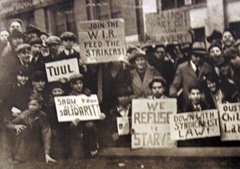


















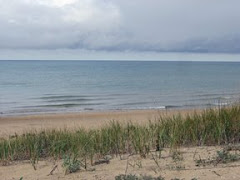




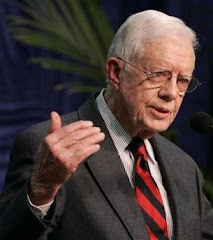


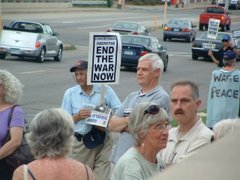
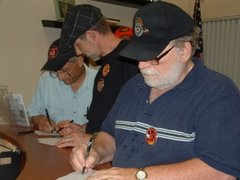
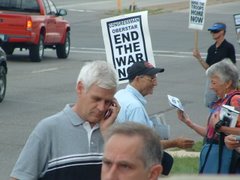








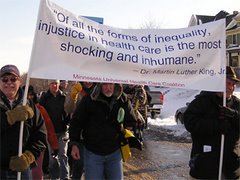
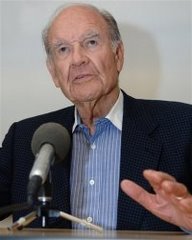




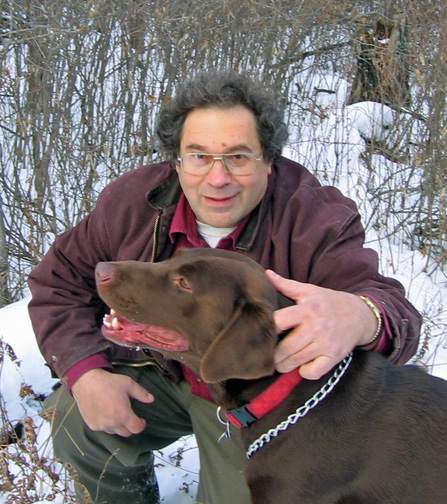











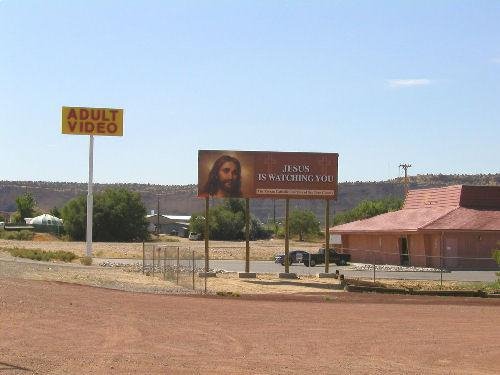
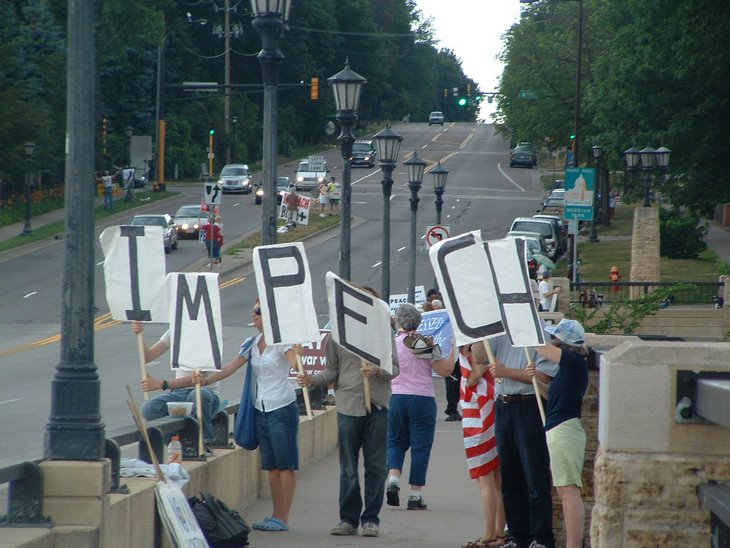














It seems that “jobs” and the wealth of our industry and industrialist/stockholder class is more important than survival of the species.
The single greatest global problem and threat to the environment is war and war preparations. Agent Orange use in the U.S. War in Vietnam killed an area the size of Massachusetts. Genetic damage among ensuing generations has occurred among the Vietnamese.
The burning of the oil fields during Iraq War I is a more recent example. Both Iraqi and U.S. forces suffered the respiratory consequences. No one entity uses more nonrenewal resources than the U.S. Military. All these examples may pale in face of the dangers of spent radioactive material that spew radiation for 1,000s of years.
The explanation of war and its extreme environmental consequences are to be found in the bowels of capitalism. The tendency of rates of profits to fall send competing capitalist elements around the globe seeking to stop this trend. Going to places whose people are not in a position to defend nature is their “solution.”
An unfortunate example now is the so-called “pivot to Asia.” The U.S. Administration is deploying up to 60% of its military force there. Why? It is looking to exploit natural resources such as oil and gas.
War and war preparations along with peace and peace making construct one dialectical whole. The resolution of this contradiction in favor of peace is of major importance to the many who place nature before profits. Here lies the material basis for cooperation between the labor, peace and environmental movements. The blue-green alliance is one result that needs much more attention in our work both on state and local levels.
Socialism has the best chance to do it right vis a vis the environment. Its thrust for social solidarity and raising the cultural/educational level of all the people can only bode well for the environment. Of course, there are no guarantees. Immersion in environmental struggles would be the best determiner of a Left and peoples movement with a deep environmental consciousness.